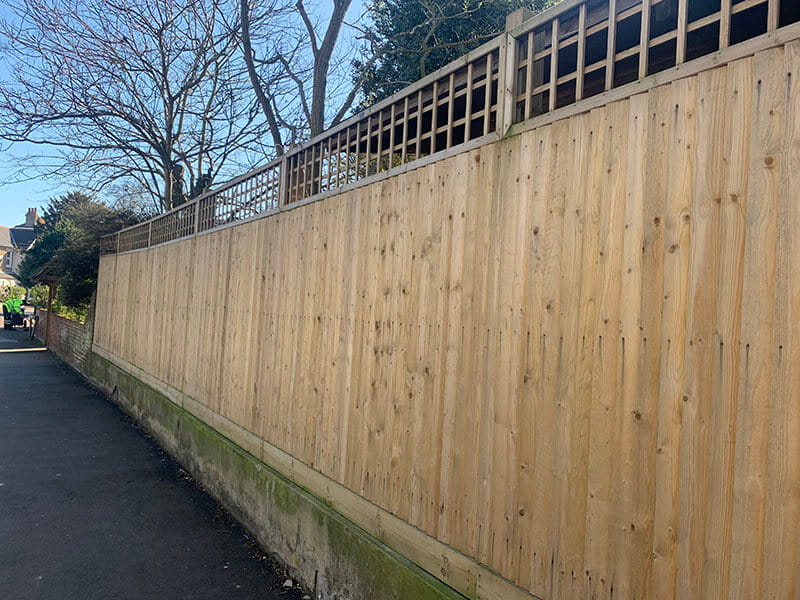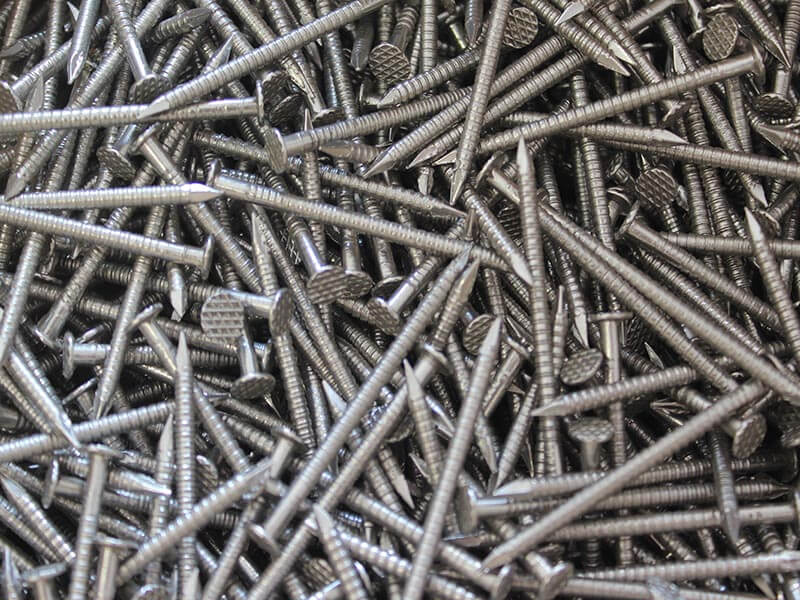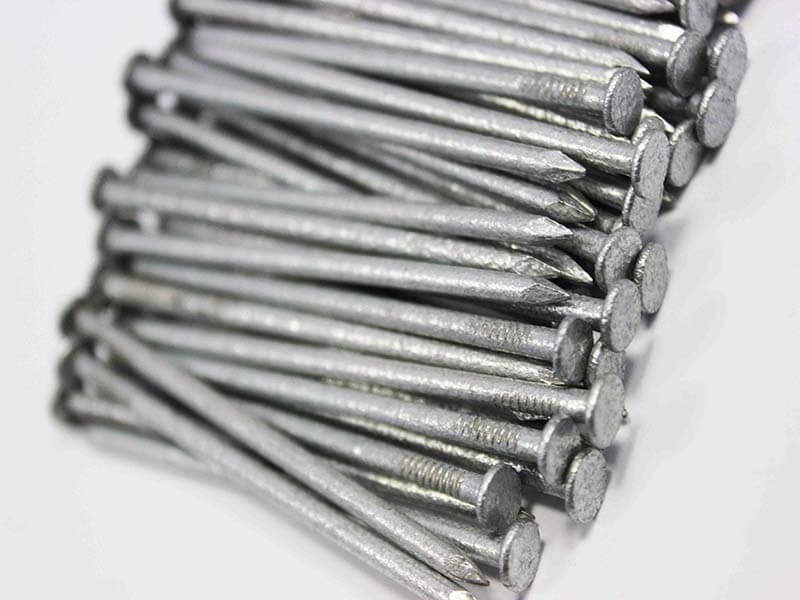What Nails To Use While Fencing
What type of nails do I need for my fence?
When you've spent time and money choosing and installing your dream garden debate, the last thing you want is for it to neglect or look unsightly due to nails not property or going rusty making them weak. To help avert this happening, this blog will answer some common questions almost what nails are used for fencing and why. We'll discuss the different materials and nail finishes, what the various types of nails are such equally apparently wire and ring shank and when to employ them, and how rust can ruin your fencing.
How rust can damage your fence
Every bit you can see from the moving-picture show, this fence has been put together using depression quality nails that accept gone rusty and leaked rust down the fence. Rust is when iron (a compound of steel) reacts with oxygen and water. Equally fences are installed exterior, they are guaranteed to come into contact with both, making them highly susceptible to rust. Fences in gardens well-nigh the ocean are even more prone to rust, as the common salt in the sea air accelerates the oxidisation process.

Rust on a contend has an ugly appearance. It produces an orangey brownish substance which stains the wood as information technology bleeds downward the argue. Not but does rust look bad, it also amercement the integrity of the timber and so that it will somewhen splinter and break downwards, loosening nails and forcing them to autumn out until the contend finally falls apart. Rust causes varying degrees of harm depending on the levels of oxide in the metallic and will affect any treated or non-treated timber argue. While our fences are resistant to rot and insect set on, timber cannot be protected against rust, which is why it is then important to use high quality galvanised or stainless steel nails. If poor quality nails are used during the installation of your fence, this will impact your guarantee if information technology becomes damaged equally a result of rust.
What'due south the divergence betwixt a bright, galvanised or stainless steel nail?
Vivid
Vivid nails have no surface coating, and are very susceptible to rust and corrosion, so they should never be used for fencing or where they will be exposed to the elements. Vivid nails should only be used for internal interior projects.
Galvanised
Galvanised steel is regular steel that has been hot dip coated in zinc to make it corrosion resistant. The zinc layer creates a barrier betwixt the metallic and the surrounding surround, including water. Galvanised steel is a cheaper alternative to stainless steel and is suitable for use with pressure level treated timber. Galvanised nails can get clogged during the hot dipping process, making information technology difficult to create a detailed surface; therefore galvanised nails are usually smoothen rather than textured. We offer premium galvanised round wire nails in a diverseness of gauges and lengths suitable for many fencing applications.
Stainless steel
Stainless steel is produced by mixing ordinary steel with 10% or more of chromium when it is in its molten state, which creates a strong metal that prevents rusting. Stainless steel is generally stronger than galvanised steel and has a bright, shiny surface giving a good aesthetic appearance. Due to the extensive manufacturing process, stainless steel is more expensive than galvanised steel. Fences being installed in littoral areas should opt for stainless steel, as it offers more protection from the salty ocean air. Stainless steel nails are able to have textures and rings, providing a more than secure fixing with increased friction. We offer stainless steel ring shank nails with a 2.65mm gauge and 50mm length, ordinarily used for attaching pales to rails on our traditional (kit-grade) fencing ranges. All our contemporary panels use stainless steel nails throughout.

What's the difference between round wire and ring shank nails?
Ring shank nails
As the name suggests, band shank nails have ridges or spirals which can increase the holding power substantially. The ridges grip into the wood, providing friction which helps to prevent the nail from loosening or falling out over time.
• Good for attaching pales to rails in traditional fencing to provide additional belongings power
• Harder to remove and then need to be precise
Round wire nails
Round wire nails have an nigh shine shank which allows them to drive into the wood more easily. They provide strength and are generally used in areas that will not exist seen.
• Suitable for almost applications unless specified otherwise
• Easier to install and remove in case of a fault beingness fabricated

What size nails do I need?
The size of the nail depends on the application, simply here are some general guidelines of when yous might demand dissimilar size/type nails when installing fencing and garden landscaping products.

30mm nails - galvanised round wire nails:
• Used when cut down a framed contend panel
50mm nails -stainless steel band shank nails:
• Used to attach pales to rails in our Traditional Featherboard system
50mm nails -galvanised round wire nails:
• Used throughout our Traditional Palisade arrangement
75mm galvanised round wire nails:
• Used in our Jakoustic® systems for nailing boards to posts
• Used for fixing the gravel lath to track in our Traditional Featherboard fencing system
• Used with our Decking for fixing joists to posts
• Used with knee joint rail fencing to attach rails to posts and straps to track
100mm galvanised round wire nails:
• Used in our Post and Rail (Nailed) for nailing runway to posts
• Used for attaching rails to posts in our Kissing Gates
• Used within our Chestnut fencing arrangement.
Source: https://www.jacksons-fencing.co.uk/the-edit/what-type-of-nails-do-i-need-for-my-fence
Posted by: kovachcubled.blogspot.com


0 Response to "What Nails To Use While Fencing"
Post a Comment